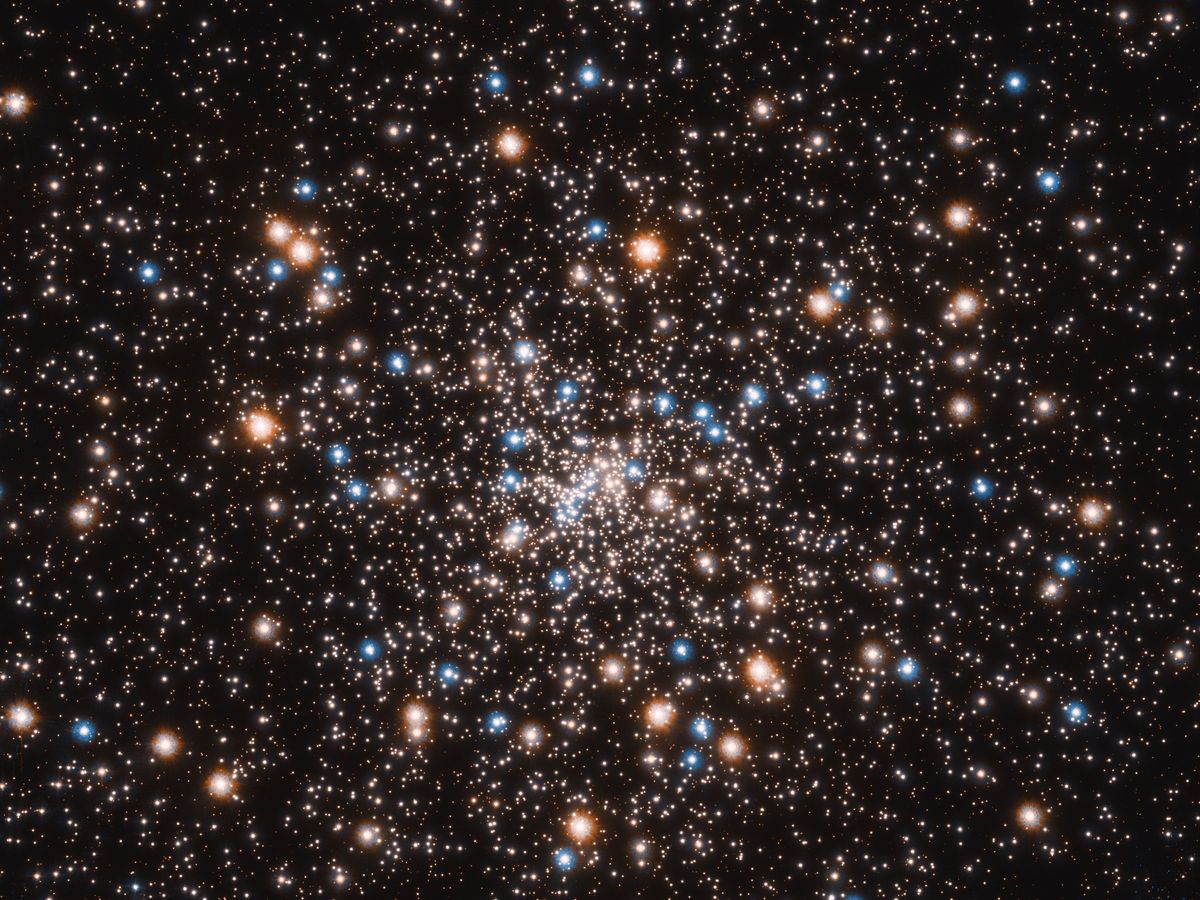Scientists find clump of black holes inside the heart of globular cluster (video)

A tight knot of stars nearly as old as the universe hides a dark secret at its core.
The globular cluster NGC 6397, a conglomeration of stars about 7,800 light-years from Earth, likely harbors a clump of small black holes at its heart, a new study reports.
Researchers studied the movement of stars in NGC 6397 using NASA’s Hubble Space Telescope and the European Space Agency’s Gaia spacecraft. These motions revealed the existence of a hidden mass at the cluster’s center — a “central dark component” that makes up 0.8 to 2% of NGC 6397’s total mass.
Images: Black holes of the universe
That inferred mass is consistent with an intermediate black hole, a cosmic beast midway between stellar-mass black holes, which form after the collapse of big stars, and the supermassive beasts that sit at the cores of most, if not all, galaxies.
Intermediate black holes are elusive; only a few candidates have been discovered to date. And NGC 6397’s dark mass is not a member of those privileged ranks.
“The small effective radius of the diffuse dark component suggests that it is composed of compact stars (white dwarfs and neutron stars) and stellar-mass black holes,” authors Eduardo Vitral and Gary Mamon, both of the Paris Institute of Astrophysics in France, wrote in the new study, which was published online Thursday (Feb. 11) in the journal Astronomy & Astrophysics.
The stellar-mass black holes “should dominate the mass of this diffuse dark component, unless more than 25% escape from the cluster,” they added.
“Ours is the first study to provide both the mass and the extent of what appears to be a collection of mostly black holes in the center of a core-collapsed globular cluster,” Vitral said in a NASA statement, referring to a type of cluster with an especially dense nucleus.
The new study could have applications that reverberate far beyond NGC 6397, one of the nearest globular clusters to Earth. For example, if tightly packed black holes are a common feature of core-collapsed clusters, Vitral and Mamon note, these collections of stars may be a prominent source of the gravitational waves detected by the Laser Interferometer Gravitational-Wave Observatory.
Mike Wall is the author of “Out There” (Grand Central Publishing, 2018; illustrated by Karl Tate), a book about the search for alien life. Follow him on Twitter @michaeldwall. Follow us on Twitter @Spacedotcom or Facebook.
